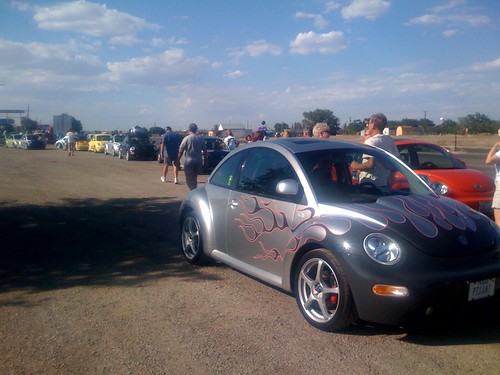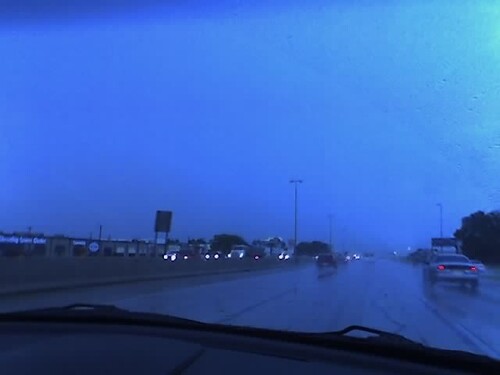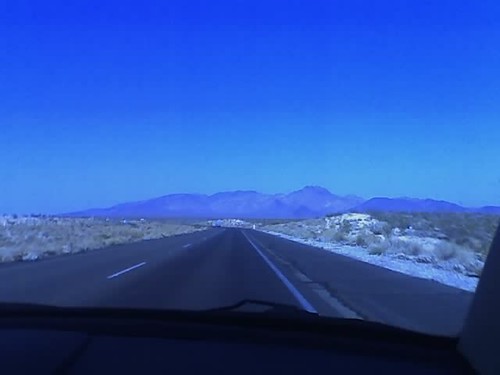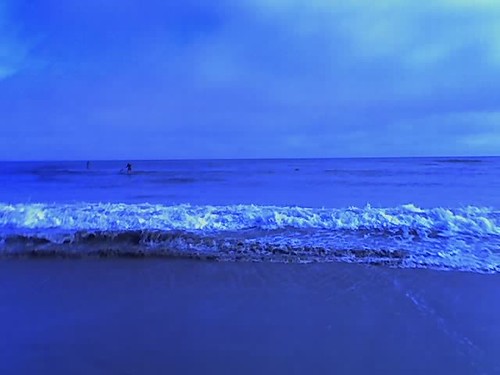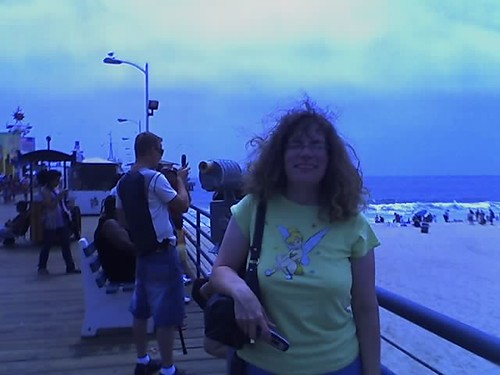Beetles Caravan
Route 66 Road Trip Morning, Day 17 in Joplin, Missouri
We made a lot better progress yesterday on the trip home; all the way to Joplin, Missouri. And we even got a couple of stops in at the Cadillac Ranch, the Bug Ranch, and the restored U-Drop-Inn Gas Station in Shamrock, Texas.

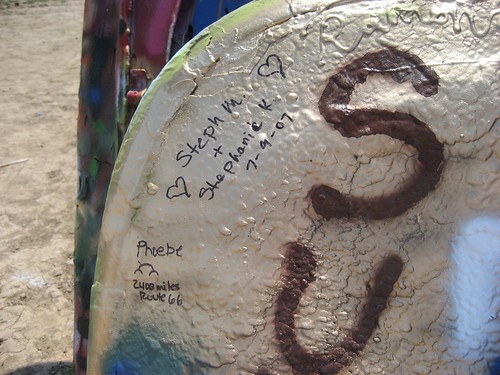
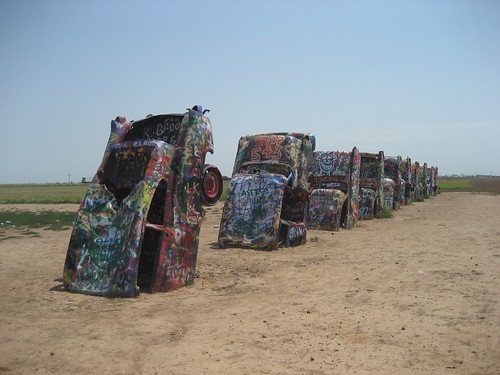
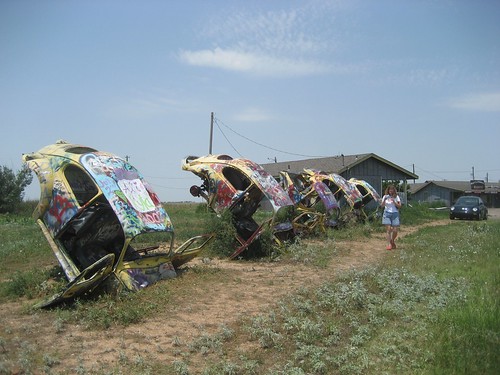
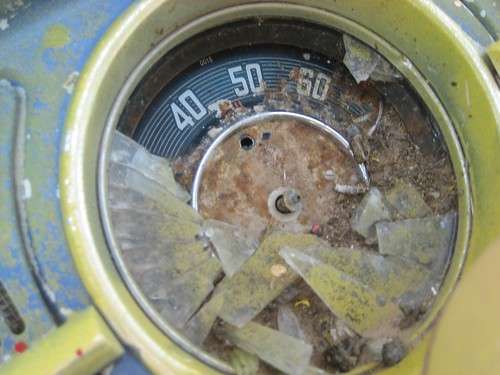

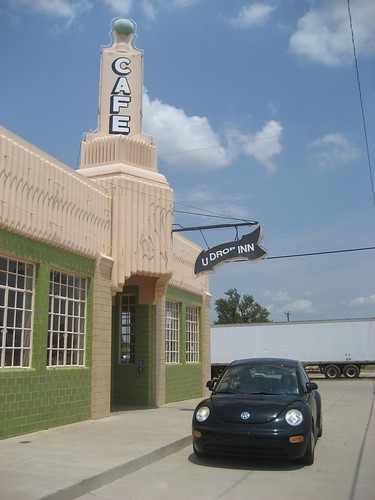
See all Photos from Santa Rosa, New Mexico to Joplin, Missouri.
Today, we head home, to finally see our pets and our house again. Needless to say, we’ll anxious to be back.
Googie Retro Signs on Route 66
While waiting for my photos to upload, I was doing some ego surfing and found a nice woman named Cordelia had blogged about reading about our Route 66 road trip – and she mentioned that she looked up the word “googie” because I used it several times to describe some of the old retro signs along Route 66. I had intended to include a link to a definition of the term, but didn’t due to the lack of internet; it sort of made it hard to surf around.
Cordelia got a great definition from answers.com:
“Googie” describes a futuristic, often outrageous, building style that evolved in the United States during the 1950s. Googie architecture was designed to attract customers. The name “Googie” comes from a famous coffee shop in Los Angeles. Like the shop, Googie buildings often have flashing lights, sharp angles, boomerang and flying saucer shapes, and lots of glass and steel. On the east coast, googie ideas were expressed in the zig zag rooflines of coffee shops.The Googie style is sometimes called called Coffee House Modern, Doo-Wop, Populuxe, and Space Age.
—The article is attributed to Jackie Craven.
Also, Wikipedia describes “googie” thusly:
Googie, also known as populuxe or doo-wop, is a subdivision of expressionist, or futurist architecture influenced by car culture and the Space Age and Atomic Age, originating from southern California in the late 1940s and continuing approximately into the mid-1960s. With upswept roofs and, often, curvaceous, geometric shapes, and bold use of glass, steel and neon, it decorated many a motel, coffee house and bowling alley in the 1950s and 1960s. It epitomizes the spirit a generation demanded, looking excitedly towards a bright, technological and futuristic age. Googie or Populuxe style of architecture was characterized by space-age designs that depict motion, such as boomerangs, flying saucers, atoms, and parabolas. Building such as this reflects American society’s emphasis on futuristic designs and fascination with space-age themes.
In looking through all my pictures thus far, I have dozens, perhaps even a hundred or so, cool retro signs and buildings from along Route 66, so I’m going to put together, when I get the chance, a flickr photo set of just those pictures. Aside from being really cool, It will help me with some design ideas I have for a project I’m going to work on next…
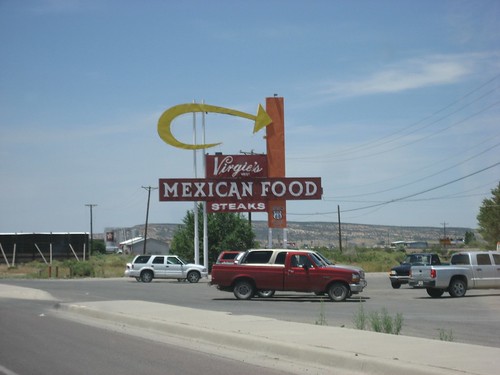

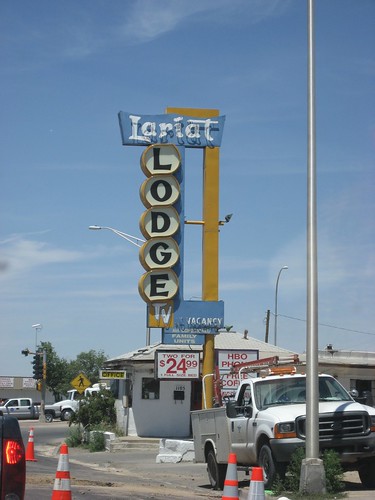
Kingman, Arizona for the night
We decided to make an early night of it in Kingman, Arizona; staying at a Comfort Inn because they have a indoor hot tub and free wireless. Ah, sweet high-speed internet, how I love thee so. I thought I would never see you again. This way we’ll have some time to decompress and get an early start headed east in the morning. And upload some of the gazillion pictures I’ve taken, I hope. I’m realizing that I need to create separate sets of pictures for each day of the trip, but that’s not going to happen until I get home.
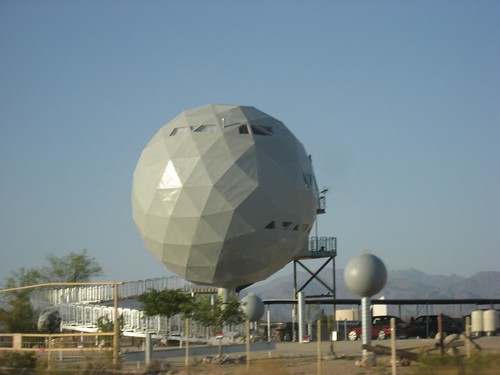
Our friends Dan and Doug are having the billionth annual 70’s party back at home in Indianapolis; we’re keeping caught up with the festivities by twitter.
And if someone gets a chance, tell John Steele that Phoebe loves her new vacuum hose, and we are so grateful to him for being our personal Route 66 mechanic, along with Jerry. John Steele rules.
See all photos from Lompoc, California to Kingman, Arizona

